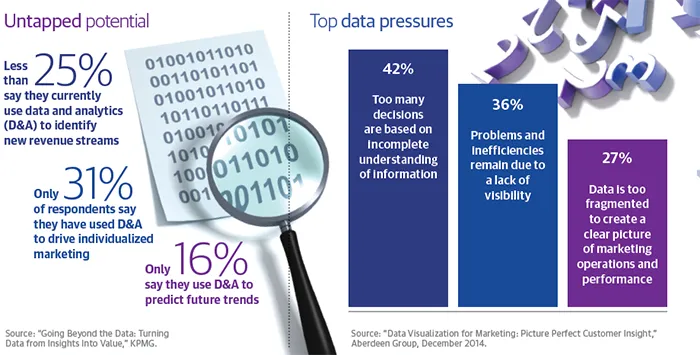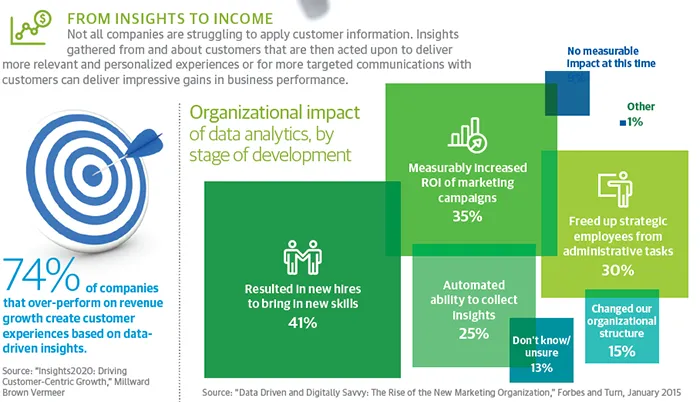Customers share tons of information about themselves—both intentionally and unintentionally. They openly voice their happiness or irritation following great or lousy customer experiences in social media channels. Meanwhile, there’s a lot that firms can learn about customers’ interests and intentions based on what they do at a company’s website and how they search for brands online.
Customer data can provide organizational leaders with powerful insights about individual customers, including their needs, preferences, attitudes, and behaviors. But it’s only through the use of analytics tools that decision-makers are able to make sense out of customer data and turn the data into insights. This helps explain why 81 percent of enterprises are now using analytics to improve their understanding of customers, according to a KPMG study.
“One of the most powerful things about using analytics with customer data is that these tools can allow the data to inform marketers what’s happening with customers instead of their preconceived notions of what they think should be happening,” says Martin Longo, chief technology officer at Revana, a TeleTech company. Machine learning and other algorithmic technologies can lead to profound insights, for example.
Yet all of this only matters if companies analyze the right data, break down silos, understand how the information fits into the business, and proactively act on the insight generated.
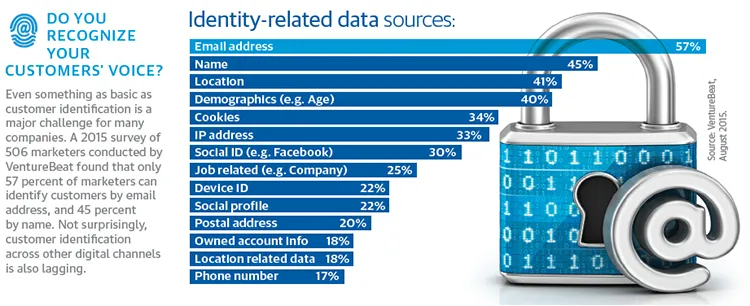
CUSTOMERS: WHAT'S IN IT FOR ME
Although many consumers are willing to share personal information about themselves with companies, they also expect companies to provide them some value in return. For instance, eight out of 10 global consumers say they’re willing to share key pieces of personal information with brands, according to an August 2015 study by Aimia. Still, organizations need to be careful not to take that willingness too far.
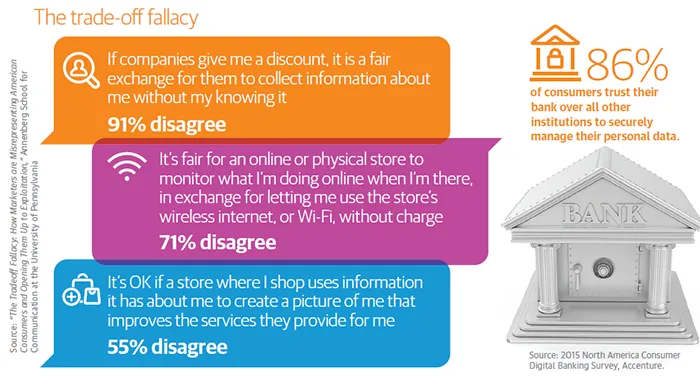
BREAKING PAST SILOS
Customers aren’t one-dimensional. They use multiple channels in their customer journeys and their behaviors are constantly shifting. Yet data silos prevent 42 percent of marketers from having a complete and consistent view of their customers, according to the 2015 Teradata Global Data-Driven Marketing Survey.
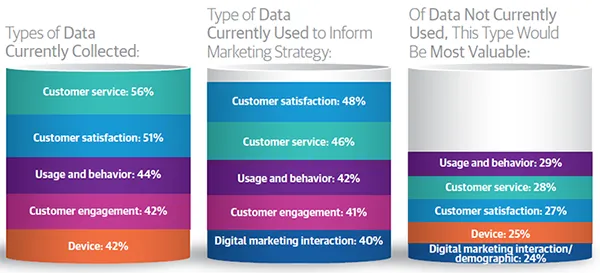
TURNING INSIGHTS INTO ACTION
Every company has a competitive advantage over its rivals: the unique information it has about its customers. Data about the products customers have purchased, the websites they visit, the sentiments they share about brands on social media, and the reasons they reach out to the contact center can all be used to gain a deeper understanding of customers’ needs and preferences and provide them with customized experiences.
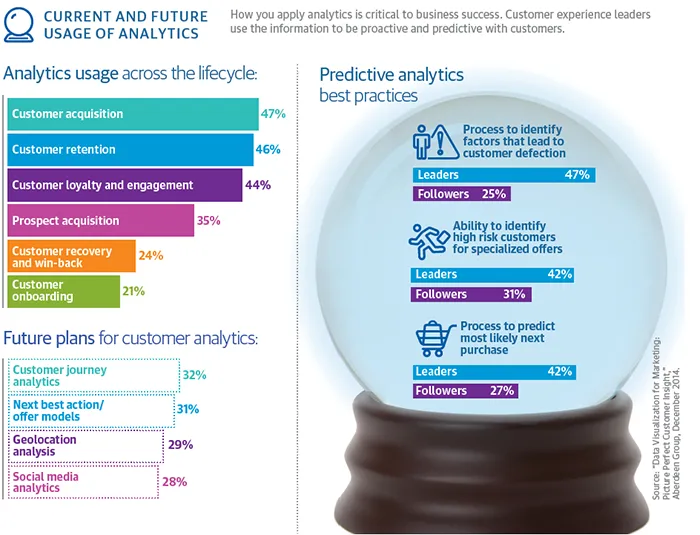
JUST GETTING STARTED
It’s still early days for many companies in their use of customer analytics and there are tremendous opportunities for moving from insights to action. For instance, even though 81 percent of companies use customer data and analytics to improve their understanding of customers, just 41 percent of organizations have actually created tailored offers to prospective customers, according to KPMG. These gaps are due to a number of factors, including poor data quality, poor integration of customer data between functions and channels, and a lack of resources and tools to leverage customer data for actionable insights.
